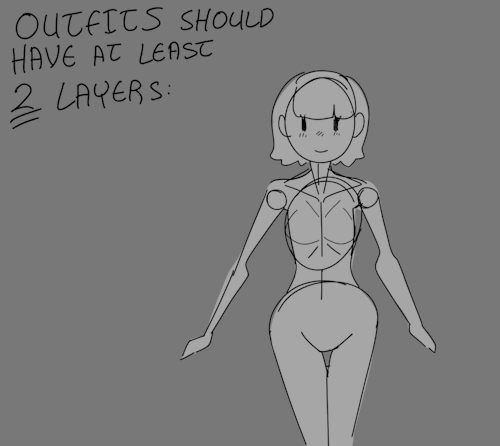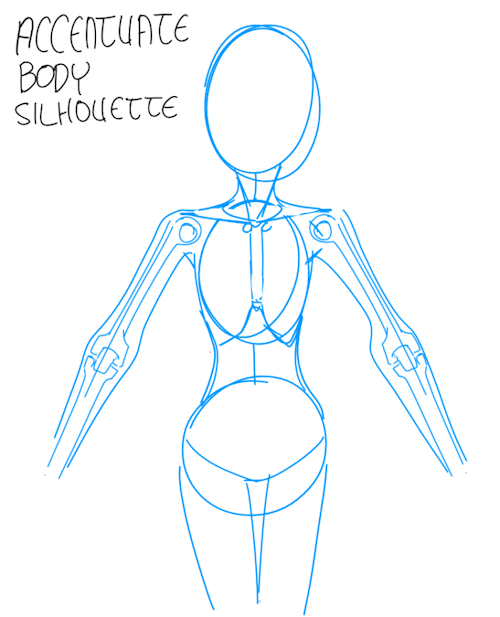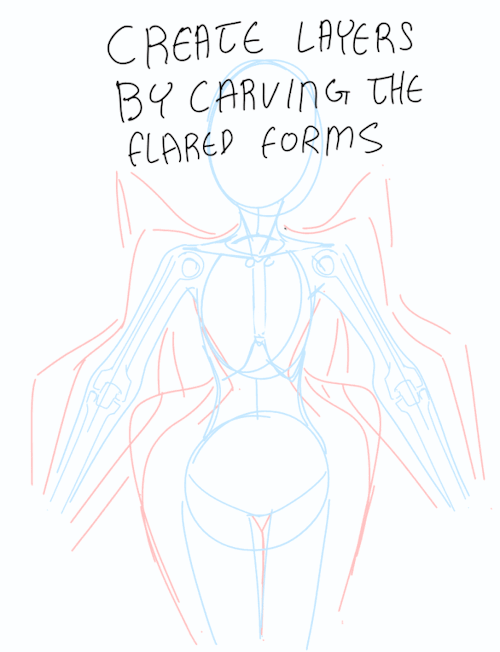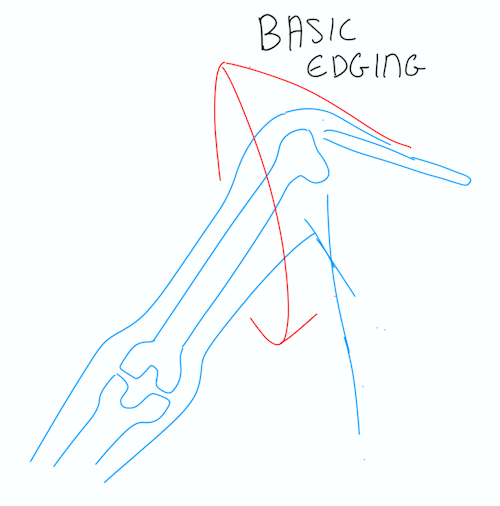Handmade Drawing References :)
handmade drawing references :)


















I took these pictures mainly to analyze my hand structure. Feel free to use them for your art, if you'd like to!
More Posts from Dagothurofficial and Others
So my problem with most ‘get to know your character’ questioneers is that they’re full of questions that just aren’t that important (what color eyes do they have) too hard to answer right away (what is their greatest fear) or are just impossible to answer (what is their favorite movie.) Like no one has one single favorite movie. And even if they do the answer changes.
If I’m doing this exercise, I want 7-10 questions to get the character feeling real in my head. So I thought I’d share the ones that get me (and my students) good results:
What is the character’s go-to drink order? (this one gets into how do they like to be publicly perceived, because there is always some level of theatricality to ordering drinks at a bar/resturant)
What is their grooming routine? (how do they treat themselves in private)
What was their most expensive purchase/where does their disposable income go? (Gets you thinking about socio-economic class, values, and how they spend their leisure time)
Do they have any scars or tattoos? (good way to get into literal backstory)
What was the last time they cried, and under what circumstances? (Good way to get some *emotional* backstory in.)
Are they an oldest, middle, youngest or only child? (This one might be a me thing, because I LOVE writing/reading about family dynamics, but knowing what kinds of things were ‘normal’ for them growing up is important.)
Describe the shoes they’re wearing. (This is a big catch all, gets into money, taste, practicality, level of wear, level of repair, literally what kind of shoes they require to live their life.)
Describe the place where they sleep. (ie what does their safe space look like. How much (or how little) care / decoration / personal touch goes into it.)
What is their favorite holiday? (How do they relate to their culture/outside world. Also fun is least favorite holiday.)
What objects do they always carry around with them? (What do they need for their normal, day-to-day routine? What does ‘normal’ even look like for them.)
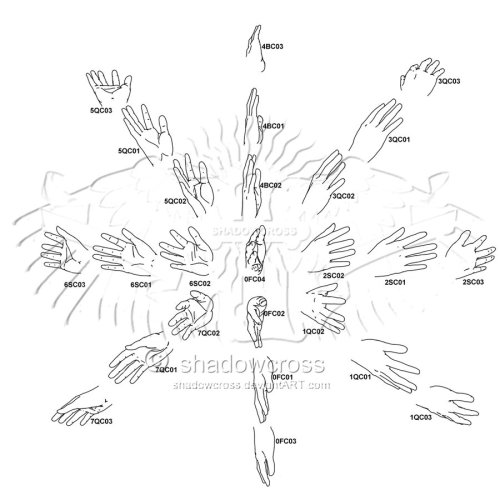


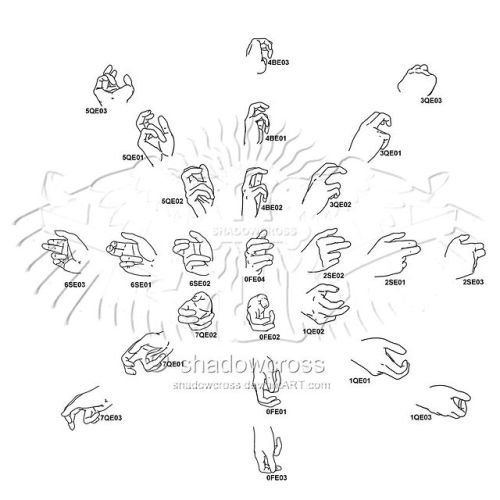
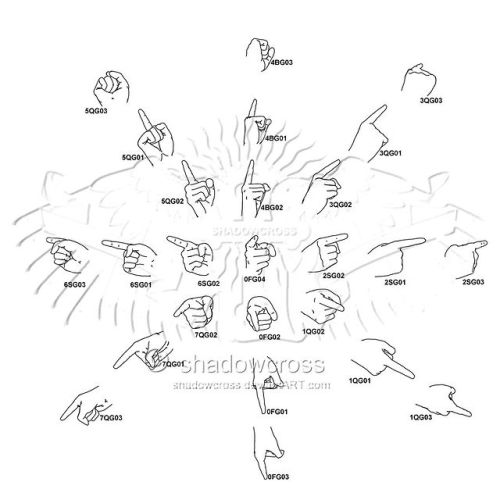
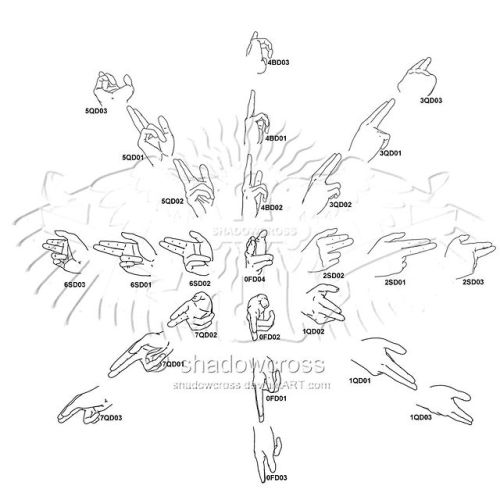
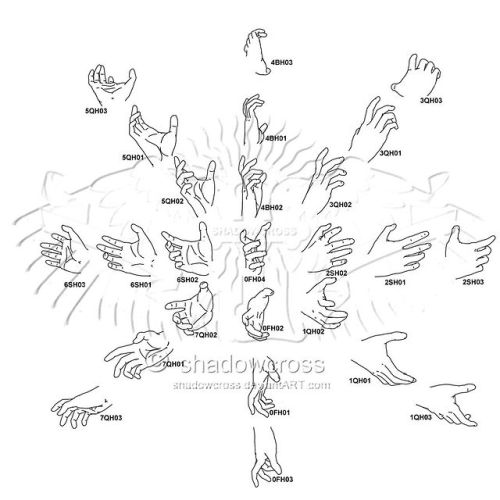
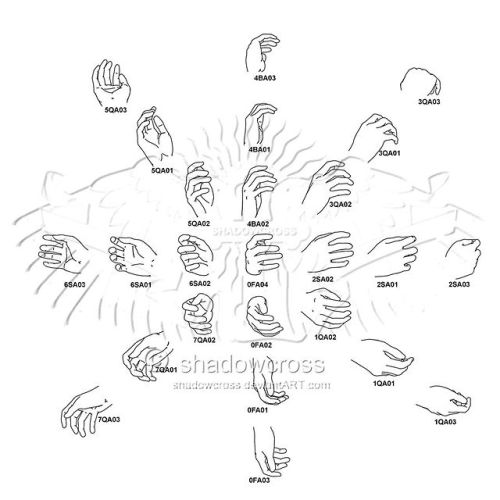
A mouth-watering fuck-ton of hand angle references.
By Shadowcross on DA.
Skip Google for Research
As Google has worked to overtake the internet, its search algorithm has not just gotten worse. It has been designed to prioritize advertisers and popular pages often times excluding pages and content that better matches your search terms
As a writer in need of information for my stories, I find this unacceptable. As a proponent of availability of information so the populace can actually educate itself, it is unforgivable.
Below is a concise list of useful research sites compiled by Edward Clark over on Facebook. I was familiar with some, but not all of these.
⁂
Google is so powerful that it “hides” other search systems from us. We just don’t know the existence of most of them. Meanwhile, there are still a huge number of excellent searchers in the world who specialize in books, science, other smart information. Keep a list of sites you never heard of.
www.refseek.com - Academic Resource Search. More than a billion sources: encyclopedia, monographies, magazines.
www.worldcat.org - a search for the contents of 20 thousand worldwide libraries. Find out where lies the nearest rare book you need.
https://link.springer.com - access to more than 10 million scientific documents: books, articles, research protocols.
www.bioline.org.br is a library of scientific bioscience journals published in developing countries.
http://repec.org - volunteers from 102 countries have collected almost 4 million publications on economics and related science.
www.science.gov is an American state search engine on 2200+ scientific sites. More than 200 million articles are indexed.
www.pdfdrive.com is the largest website for free download of books in PDF format. Claiming over 225 million names.
www.base-search.net is one of the most powerful researches on academic studies texts. More than 100 million scientific documents, 70% of them are free
on endlings, and despair
Hey, y'all. It's...been a rough couple of weeks. So, I thought--better to light a single candle, right?
If you're familiar with wildlife conservation success stories, then you're likely also familiar with their exact polar opposite. The Northern White Rhino. Conservation's poster child for despair. Our greatest and most high-profile utter failure. We slaughtered them for wealth and status, and applied the brakes too slow. Changed course too late.
We poured everything we had into trying to save them, and we failed.
We lost them. They died. The last surviving male was named Sudan. He died in 2018, elderly and sick. His genetic material is preserved, along with frozen semen from other long-dead males, but only as an exercise in futility. Only two females survive--a mother and daughter, Najin and Fatu.
Both of them are infertile. They still live; but the Northern White Rhinoceros is extinct. Gone forever.
In 2023, an experimental procedure was attempted, a hail-mary desperation play to extract healthy eggs from the surviving females.
It worked.
The extracted eggs were flown to a genetics lab, and artificially fertilized using the sperm of lost Northern males. The frozen semen that we kept, all this time, even after we knew that the only living females were incapable of becoming pregnant.
It worked.
Thirty northern white rhino embryos were created and cryogenically preserved, but with no ability to do anything with them, it was a thin hope at best. In 2024, for the first time, an extremely experimental IVF treatment was attempted on a SOUTHERN white rhino--a related subspecies.
It worked.
The embryo transplanted as part of the experiment had no northern blood--but the pregnancy took. The surgery was safe for the mother. The fetus was healthy. The procedure is viable. Surrogate Southern candidates have already been identified to carry the Northern embryos. Rhinoceros pregnancies are sixteen months long, and the implantation hasn't happened yet. It will take time, before we know. Despair is fast and loud. Hope is slower, softer. Stronger, in the end.
The first round may not take. We'll learn from it. It's what we do. We'll try again. Do better, the next time. Fail again, maybe. Learn more. Try harder.
This will not save the species. Not overnight. The numbers will be very low, with no genetic diversity to speak of. It's a holding action, nothing more.
Nothing less.
One generation won't save a species. But even a single calf will buy us time. Not quite gone, not yet. One more generation. One more endling. One more chance. And if we seize it, we might just get another after that. We're getting damn good at gene editing. At stem-cell research. In the length of a single rhino lifetime, we'll get even better.
For decades, we have been in a holding action with no hope in sight. Researchers, geneticists, environmentalists, wildlife rehabbers. Dedicated and heroic Kenyan rangers have kept the last surviving NWRs under 24/7 armed guard, line-of-sight, eyes-on, never resting, never relaxing their guard. Knowing, all the while, that their vigilance was for nothing. Would save nothing. This is a dead species--an elderly male, two females so closely related that their offspring couldn't interbreed even if they could produce any--and they can't.
Northern white rhino conservation was the most devastatingly hopeless cause in the world.
Two years from now, that dead species may welcome a whole new generation.
It's a holding action, just a holding action, but not "just". There is a monument, at the Ol Pejeta Conservancy, where the last white rhinos have lived and will die. It was created at the point where we knew--not believed, knew--that the species was past all hope. It memorializes, by name there were so few, the last of the northern white rhinos. Most of the markers have brief descriptions--where the endling rhino lived, how it was rescued, how it died.
One marker bears only these words: SUDAN | Last male Northern White Rhino.
If even a single surrogate someday bears a son, we have erased the writing on that plaque forever.
All we can manage is a holding action? Then we hold. We hold hard and fast and long, use our fingernails if we have to. But hold. Even and perhaps especially when we are past all hope.
We never know what miracle we might be buying time for.
I see a lot of positivity posts about 12-year-olds just learning to draw. Posts cautioning us to be mindful of 11-year-olds with no grasp of anatomy and 13-year-olds whose characters are all the same person with different hair and clothes, and I love those posts. Those are great posts. Keep those posts coming, tumblr.
But can I ask, what about the 25-year-old who just bought their first ever sketchbook? What about the 32-year-old who’s been drawing for a month and has just about got the hang of a human-looking face? What about the 67-year-old who finally has time to sit down and learn how to paint like they’ve always wanted?
Not everyone starts drawing as a child. Not everyone learned as a preteen. Some people start in college. Some people start when their career is going well and they feel like it’s time for a new hobby. Some people start after they’ve retired.
Not all beginner artists are kids, and I just think the adults ones deserve some encouragement, too.
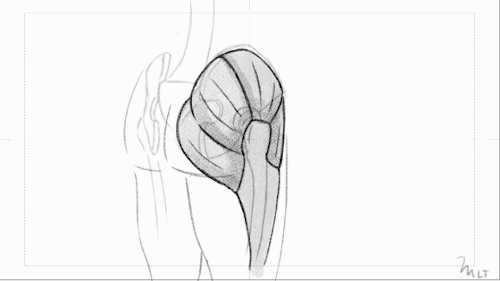
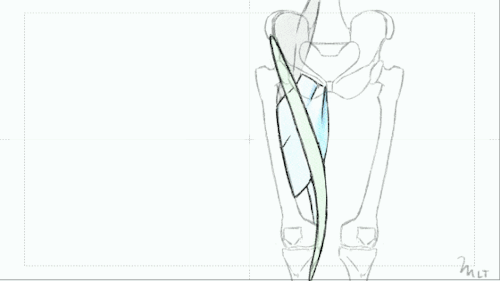
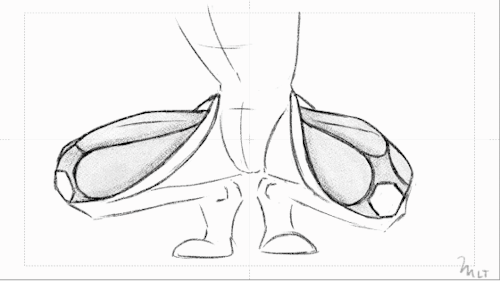


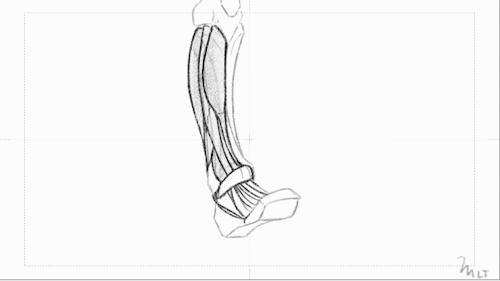
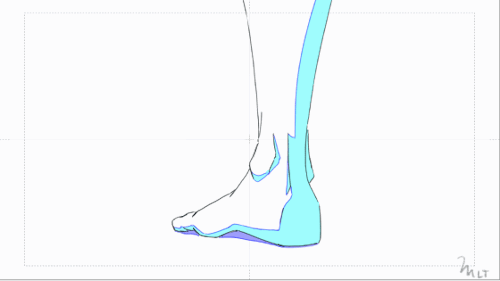
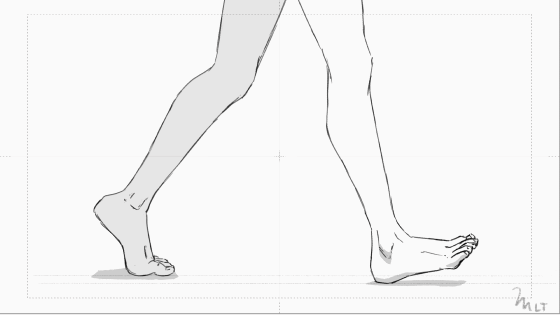
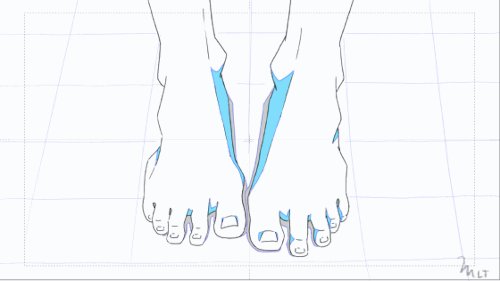
All the leg muscles and feet studies I did to level up my anatomy drawing. It all started 17 months ago as part of an art challenge I started on my Youtube channel and it's finally done!

Here’s a thing I see a ton of people mess up, even Studio Ghibli. Hopefully this is an easy graphic you can pull up to help out.






One of my favorite things about rewatching Cowboy Bebop is seeing all these one-line characters that you instantly know everything about from how they decorate their tiny box in space.
-
 swimming-in-refs reblogged this · 1 week ago
swimming-in-refs reblogged this · 1 week ago -
 rip-naked-peet reblogged this · 1 week ago
rip-naked-peet reblogged this · 1 week ago -
 bananamulberry liked this · 1 week ago
bananamulberry liked this · 1 week ago -
 pinkpepperminttt liked this · 1 week ago
pinkpepperminttt liked this · 1 week ago -
 writers-minds reblogged this · 1 week ago
writers-minds reblogged this · 1 week ago -
 mass-charge-spin reblogged this · 1 week ago
mass-charge-spin reblogged this · 1 week ago -
 bellesword liked this · 1 week ago
bellesword liked this · 1 week ago -
 waterproof-bacon liked this · 1 week ago
waterproof-bacon liked this · 1 week ago -
 dreamer-329 reblogged this · 1 week ago
dreamer-329 reblogged this · 1 week ago -
 dreamer-329 liked this · 1 week ago
dreamer-329 liked this · 1 week ago -
 saddy-go-fucky reblogged this · 1 week ago
saddy-go-fucky reblogged this · 1 week ago -
 bunnylime liked this · 1 week ago
bunnylime liked this · 1 week ago -
 ironarya liked this · 1 week ago
ironarya liked this · 1 week ago -
 haelstorm liked this · 1 week ago
haelstorm liked this · 1 week ago -
 lyctor reblogged this · 1 week ago
lyctor reblogged this · 1 week ago -
 highonparabellum liked this · 2 weeks ago
highonparabellum liked this · 2 weeks ago -
 tofuteluur reblogged this · 2 weeks ago
tofuteluur reblogged this · 2 weeks ago -
 tofuteluur liked this · 2 weeks ago
tofuteluur liked this · 2 weeks ago -
 rebarbrehab liked this · 2 weeks ago
rebarbrehab liked this · 2 weeks ago -
 poorastoria liked this · 2 weeks ago
poorastoria liked this · 2 weeks ago -
 kiara53257086 liked this · 2 weeks ago
kiara53257086 liked this · 2 weeks ago -
 depressed-insomniac reblogged this · 2 weeks ago
depressed-insomniac reblogged this · 2 weeks ago -
 depressed-insomniac liked this · 2 weeks ago
depressed-insomniac liked this · 2 weeks ago -
 twistedmichie liked this · 2 weeks ago
twistedmichie liked this · 2 weeks ago -
 daisiesofthevalley liked this · 2 weeks ago
daisiesofthevalley liked this · 2 weeks ago -
 narrowhal liked this · 2 weeks ago
narrowhal liked this · 2 weeks ago -
 so1ae1a reblogged this · 2 weeks ago
so1ae1a reblogged this · 2 weeks ago -
 so1ae1a liked this · 2 weeks ago
so1ae1a liked this · 2 weeks ago -
 narrowhal reblogged this · 2 weeks ago
narrowhal reblogged this · 2 weeks ago -
 chili-and-a-sock liked this · 2 weeks ago
chili-and-a-sock liked this · 2 weeks ago -
 aeonilua liked this · 2 weeks ago
aeonilua liked this · 2 weeks ago -
 c0tt0ntailg1rl liked this · 2 weeks ago
c0tt0ntailg1rl liked this · 2 weeks ago -
 sacroknife reblogged this · 2 weeks ago
sacroknife reblogged this · 2 weeks ago -
 kiko-s-ramble reblogged this · 2 weeks ago
kiko-s-ramble reblogged this · 2 weeks ago -
 kiko-s-ramble liked this · 2 weeks ago
kiko-s-ramble liked this · 2 weeks ago -
 sleepytowne liked this · 2 weeks ago
sleepytowne liked this · 2 weeks ago -
 lycorogue liked this · 2 weeks ago
lycorogue liked this · 2 weeks ago -
 pizzatorta liked this · 2 weeks ago
pizzatorta liked this · 2 weeks ago -
 sadbookworm reblogged this · 2 weeks ago
sadbookworm reblogged this · 2 weeks ago -
 sadbookworm liked this · 2 weeks ago
sadbookworm liked this · 2 weeks ago -
 dinodanicus liked this · 2 weeks ago
dinodanicus liked this · 2 weeks ago -
 lilaczx reblogged this · 2 weeks ago
lilaczx reblogged this · 2 weeks ago -
 fleetfoot221 reblogged this · 2 weeks ago
fleetfoot221 reblogged this · 2 weeks ago -
 fleetfoot221 liked this · 2 weeks ago
fleetfoot221 liked this · 2 weeks ago -
 w0nterr liked this · 2 weeks ago
w0nterr liked this · 2 weeks ago -
 dagothurofficial reblogged this · 2 weeks ago
dagothurofficial reblogged this · 2 weeks ago -
 al-boz0 reblogged this · 2 weeks ago
al-boz0 reblogged this · 2 weeks ago -
 al-boz0 liked this · 2 weeks ago
al-boz0 liked this · 2 weeks ago


